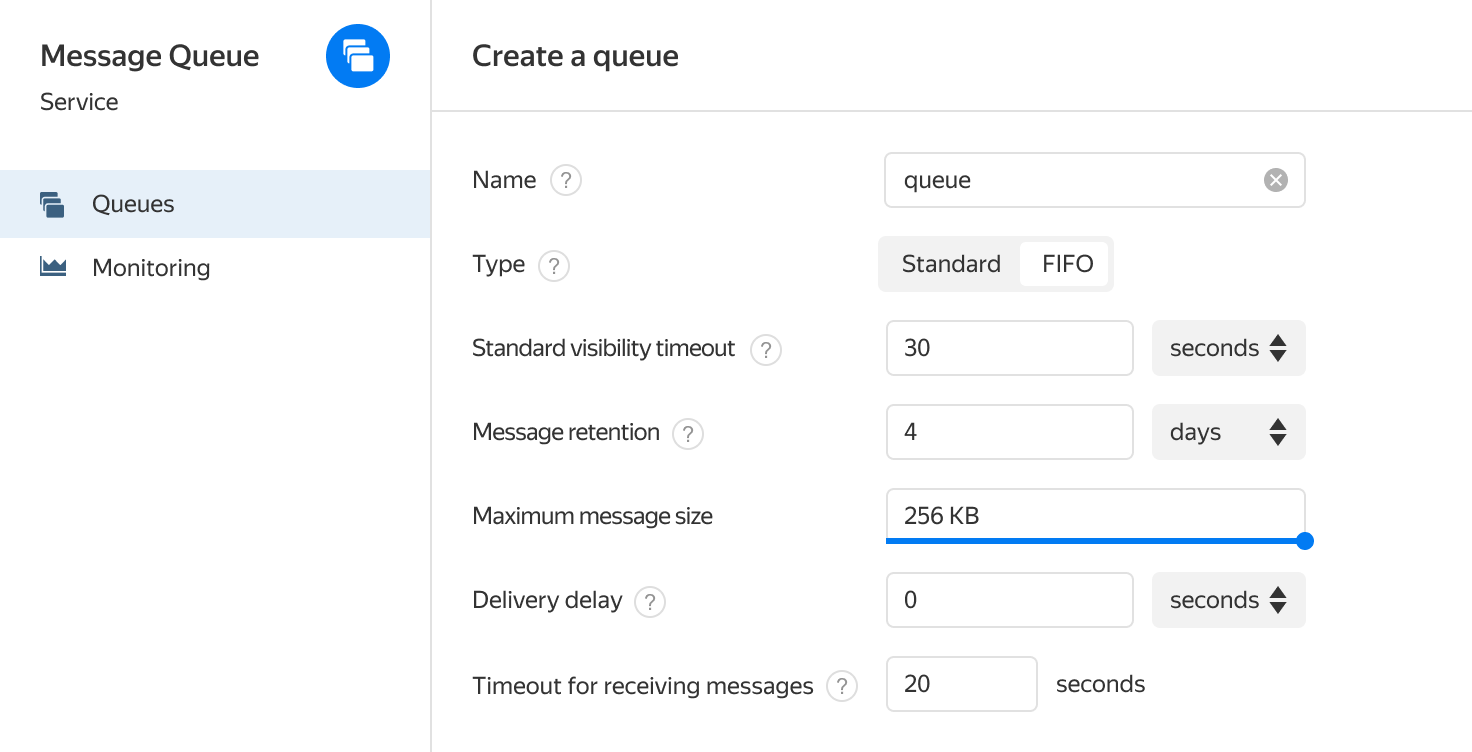
Yandex Message Queue
Yandex Message Queue
A queue service for messaging between components of distributed applications and microservices.
Standard and FIFO queues
Use standard or FIFO (first in, first out) queues depending on the number of RPS (requests per second).
Compatibility with the Amazon SQS HTTP API
Use familiar tools for interacting with Amazon SQS: the HTTP API, CLI, and libraries for various programming languages.
Fast processing
Message Queue uses fast NVMe-enabled solid-state drives to store messages.
Secure message storage
Messages are stored as multiple copies in geographically distributed availability zones. This ensures reliable storage and low latency with write confirmations.
Integration with functions and triggers
Message Queue is integrated with Cloud Functions. A trigger invokes a function that handles messages from a queue. The service also uses the Dead Letter Queue for handling errors.
Getting started
Create a queue and view the number of messages and call duration in statistics.

Questions and answers
Consumers read messages from a standard queue in random order. Standard queues guarantee that each message is delivered at least once. In rare cases, a message can be received from a standard queue twice. Use standard queues when you need maximum throughput.


